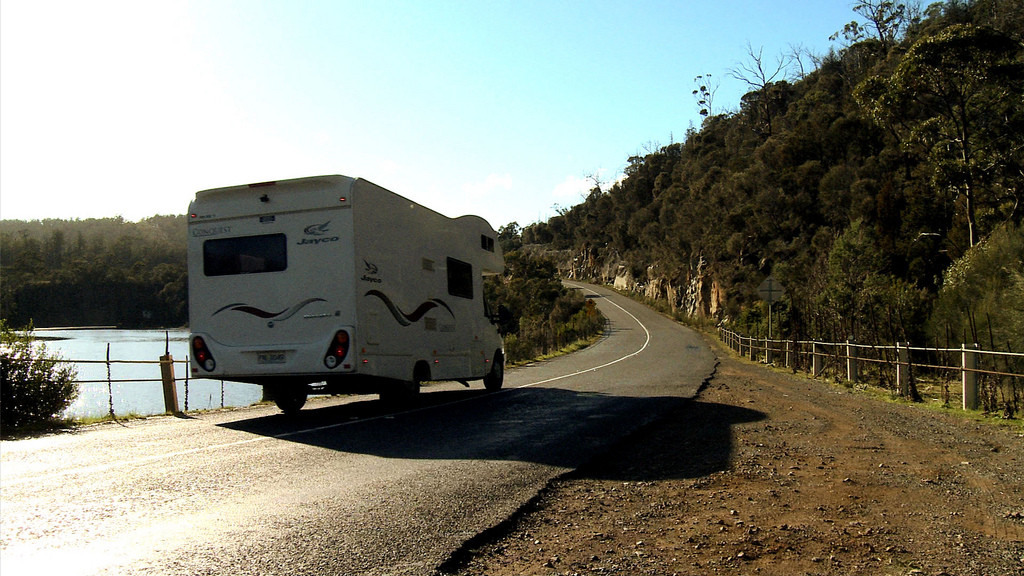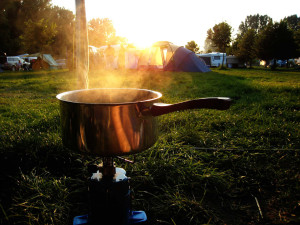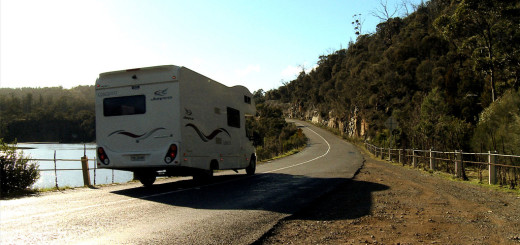Top Tips to Rent a Motorhome
Everyone comes to the world of motorhome camping from from different places, with different levels of knowledge on the subject and comfort levels, but regardless of where you’re at personally, the best way to get your feet wet is to rent a motorhome. Buying a motorhome, even a used one, represents a pretty sizable financial investment, and renting one is a great way to see what you like, and what you don’t like, before taking the plunge. Of course, renting a motorhome is also a viable vacation option even if you have no plans to ever buy one. If you’re used to staying in motels during road trips, it’s definitely worth it to try renting a small motorhome at least once to see how you like it.
Of course, there are a lot of different questions you need to ask before you rent a motorhome. For instance, you’ll need to figure out how many people will accompany you on your trip, which will affect the size, and perhaps even the class, that you rent. You’ll also have to consider how much time you’ll be spending inside and whether you’ll need any optional equipment like air conditioning or an entertainment system.

When you rent a motorhome, you need to decide which class to go for and where you’re going to take it. Image courtesy of Motorhome Rental, via Flickr (Creative Commons 2.0)
Regardless of whether you’re a dyed in the wool tent camper looking to take a motorhome for a spin, you’ve never camped in your life, or you fall somewhere in between, here are some of our best tips for renting a motorhome:
1. Understand the Different Classes
If you already know a decent amount about motorhomes, then you’re already covered. If you’re relatively new to this whole motorized RV thing, though, then you’ll want to bone up before you choose a rental. This is especially true if you’re thinking about buying a rig as some point, since a rental is a good way to test drive something similar to the rig you’d like to buy.
At the most basic level, there are three types of motorhomes:
- Class A motorhomes are the largest of the three. They are built on heavy truck platforms, which mean they can carry the heaviest loads and usually tow more than other motorhomes. Most class A motorhomes are “gassers,” which means they run on gasoline. The largest class A motorhomes are diesel pushers, which means they have rear diesel engines.
- Class B motorhomes are the smallest of the three. They are built on full sized van platforms with a range of modifications. The smallest class B motorhomes look exactly like vans on the outside, while the largest class B+ motorhomes look like a cross between class B and class C. These motorhomes have the least interior living space, and the least amount of sleeping space, but you can essentially drive them anywhere.
- Class C motorhomes are in between the other two in size. They are built on cutaway van or truck chassis, which is why they look like a van or truck cab with a boxy structure tacked on to the back. Class C motorhomes usually have more sleeping space than class A rigs of the same length due to the fact that most of them have cabover bunks.
For additional help understanding the benefits and drawbacks of each, you can check out more about the different motorhome classes.
2. Stay in Your Comfort Zone
If you’ve never driven anything larger than a four door sedan, then you might not want to jump straight into a big diesel pusher. You might actually be surprised at how easy some of the larger rigs are to maneuver, but if the thought of driving something like that has you breaking out in a cold sweat, stick to what you’re comfortable with. For instance, class B motorhomes are built on van platforms, and many of them have the exact same footprint as the vans they’re built on. So if you’ve driven a full size van, and you’re comfortable with that, you may want to start with a class B or class B+.
Depending on the rental agency you’re working with, you may be able to arrange a test drive. If that’s the case, and you feel like you could use the extra space, then by all means take a class A gasser, or even a small diesel pusher, out for a spin. The visibility when driving these rigs is hard to beat, so you may actually find yourself more comfortable riding high in a class A rig than in a smaller class C.
3. Don’t Forget About Bedtime

Motorhome dinettes fold down into beds, but they are relatively cramped for two adults. Image courtesy of ClassARVs, via Flickr (Creative Commons 2.0)
One of the most important things to consider when choosing an RV, whether to rent or to buy, is the sleeping situation. RV manufacturers typically report their sleeping accommodations based on double occupancy, so if the literature shows that a rig sleeps two, four or six people, that means it has one, two or three beds. For instance, a sub-30 foot class A motorhome might claim that it sleeps six, but when you look at the sleeping accommodations, it will typically have a dinette and sofa that fold down into beds and a “corner bed” that is roughly the size of a double or queen mattress with one corner lopped off due to space constraints.
Dinette and sofa beds in small motorhomes are typically wide enough for two children, while two adults will usually feel cramped. This often makes class C motorhomes the best choice for families, since you typically get more sleeping space than you would in a class A of similar length. Some class A motorhomes do come with bunks that lower from the ceiling above the driver and passenger chairs, but that’s more of an exception than a rule.
4. Make Sure You Have the Right License and Insurance
If you’re renting a small motorhome, then you probably won’t need a special motorhome driver’s license. There are exceptions, so you should check the specific laws where you live first, but virtually every small motorhome conforms to the laws of virtually every jurisdiction regarding special drivers’ licenses. For instance, the state of California requires a special license to drive any motorhome that is longer than 45 feet. If you’re looking at a rig that long or longer, you should definitely check the regulations where you live.
As far as special insurance is concerned, your regular car insurance will usually cover you if you rent a motorhome. Rental agencies will often offer insurance at an additional cost, but if you’re worried about it, you should check with your regular insurance company and your credit card companies first. You will typically be able to get the same coverage that the rental agency is offering, if not better coverage, for less money.
5. Don’t Eat Out

You don’t have to cook outside if you have a motorhome, but why not give it a try? Image courtesy of Felix Neumann, via Flickr (Creative Commons 2.0)
One of the huge benefits of travelling in a motorhome, versus flying or traveling in a car, is that you have a kitchen right there with you. If you stock up the fridge and pantry ahead of time, you can save money by not eating out, and spend more time enjoying the outdoors besides. To that end, you may want to pick up a cheap camping stove if you don’t already have one. The motorhome you rent will almost certainly have an oven, stove, and maybe even a microwave inside, but if the weather is nice, you might as well cook outdoors.
6. Pack Accordingly
Before you head out, check the weather and make an appropriate packing list. Bring enough groceries and other supplies to last the duration, but also pack enough clothes to handle whatever weather you might encounter, along with everything else you might end up needing. Some vital items that should be on any motorhome packing list include:
- Disposable plate and silverware
- Cooking utensils
- Broom and dustpan
- Flashlight
- Bedding (sleeping bags or blankets, pillows, etc)
- Towels
- Toiletries
Motorhome rental agencies often offer “kitchen kits” for rent that include things like silverware and cooking utensils, along with “personal kits” that include things like bedding and towels, but you can save money by just bringing your own.
7. Have Some Idea About Where You’re Going
There’s nothing wrong with just striking out and seeing where the road takes you, but if this is your first time in a motorhome, then you should definitely have some kind of itinerary ready to go. There are over 16,000 campgrounds in the United States that allow motorhomes and other recreational vehicles, and better than half of those are on public lands like state and national parks. The latter are typically less expensive and more rustic, while private parks often have amenities like cable television and full hookups.
RV rental agencies typically have literature on local attractions and places to stay, or you can buy a book that includes campgrounds and locations of interest over a wide geographical area.
8. Consider Making a Reservation

Popular campgrounds, and RV parks on busy highways, tend to fill up quickly. Image courtesy of Redjar, via Flickr (Creative Commons 2.0)
With that in mind, you may also want to make an actual reservation before you set out. It isn’t always necessary to reserve a spot at every campground, but popular ones do fill up ahead of time during peak season. Yes, there are over 16,000 campgrounds to choose from in the continental United States, but according to the RVIA, more than nine million American households have an RV.
You probably won’t be competing with all nine million rigs for the last spot at the local campground, but when you’re tired and ready to stop driving, nothing is worse than finding one fully booked campground after another.
9. Know How to Read and Dump Your Tanks
Yes, you’re probably going to have to dump your sewage tanks at least once before you return your rental motorhome. If the mere thought repulses you, then motorhoming, and RVing in general, probably isn’t for you. It really isn’t that big a deal, though, if you plan ahead.
First, you’ll want to verify that you actually have to dump your tanks before returning the motorhome. You almost certainly will have to, but it’s working checking. Then, you’ll want to keep an eye on the tank levels over the course of your trip. Most RVs come with a levels display where you can check the level of your fresh water tank in addition to your two waste water tanks. If they fill up, you’ll want to dump them ASAP to avoid problems.
In general, the only special gear you’ll need to dump the tanks is a pair of rubber gloves. You can deck yourself out in a hazmat suit if you really want to, but if you’re careful, you’re not going to get anything on your clothes.
10. Have Fun and Enjoy the Great Outdoors!
Motorhoming isn’t for everyone, but camping in an RV really is a unique experience that brings all the comforts of home right out into nature. There’s no better way to see the country right up close while also sleeping in a comfortable bed each night.








